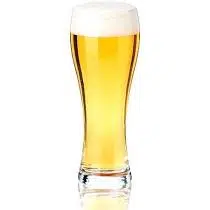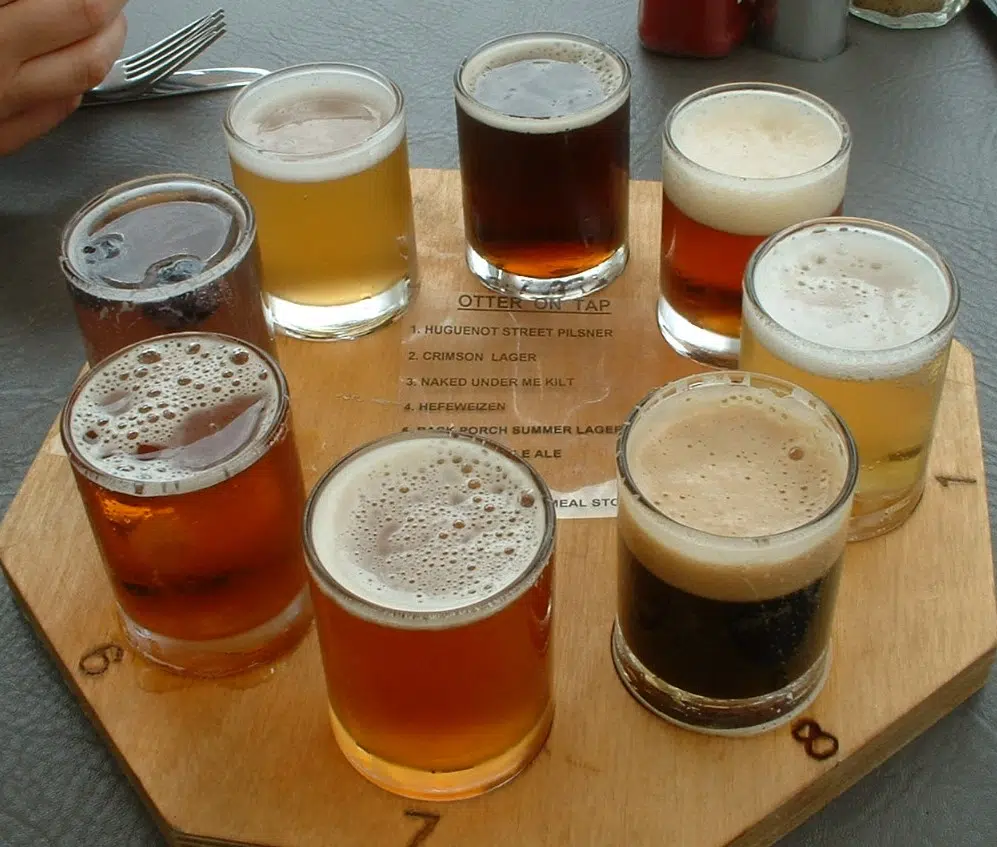The answer can be as simple as bitter-sweet soda water. Or as complex as slightly toasted grain, with hints of grapefruit, full-bodied aromatics that include apple and pear esters, and a crisp, quick dry finish.
Both soundbites are spot on as far as they go. However, the first shows a total lack of knowledge of the beverage. The second description needs to have its “Beer Tasters” jargon translated into a language that can be understood.
Over 2,500 breweries and brewpubs are in the United States as of 2022. Each of them produces at least three or four beers. The Great American Beer Festival competition features over 200 different styles of beer. To try and describe what each tastes like is impossible. So, I will choose the style that is the most popular style of beer today, Lager.
A Look at American-Style Lager Beer

I highly suggest you have a bottle, or can, of Budweiser, Coors, Pabst Blue Ribbon, or any other American-Style Lager. Chill it for an hour or two in your refrigerator. When comfortable, pour it into a clear glass.
What does American-Style Lager Look Like?
First, look at what you have poured into the glass. Forget that it is “beer,” look at it. You should see a clear, slightly golden yellow, carbonated drink with a one- to a two-inch-thick topping of tiny bubbles that look like whipped cream.
What are your impressions as you look at that glass? It looks cool and refreshing, especially if the beer is appropriately chilled, causing the beads of condensation to form outside the glass. The brightness of the golden yellow liquid glistens and looks refreshing. The rich foam adds a touch of delicate to the image. In short, it looks refreshing, and your taste receptors are already ready for a refreshing sensation.
American-Style Lager Tasting Notes:
Unlike a traditional beer tasting, we will take a good swallow of the beverage before exploring the aromas wafting up from the rich foam, slowly dissipating as we contemplate the brew in front of us.
When you take the refreshing beverage’s first swig, there are two things to consider. The first is to notice the temperature. If beer is ice cold, many flavors and aromas are hidden. Lager beers such as the beer you have in your glass should be served between 40 and 45F. This is because the beer was fermented at temperatures close to 35F, if not a bit lower. The special Lager yeast works magic at these low temperatures, turning out light-bodied beers with delicate flavors and aromas.
The second thing to remember when you take that first swig is that Carbon Dioxide (CO2), when in suspension in water/beer, is a weak acid (carbolic acid). This will affect the mouth feel of the beverage, giving it a slight tang. Compare a sip of carbonated water (Seltzer) to tap water. You will notice the difference between the carbonated water’s tingle and tap water’s less emphatic flavor.
The water used in the brewing process also affects the beer’s flavor. Water that is high in mineral content, such as mountain spring water, delivers a crispness to the beer’s flavor. Well, water with less mineral content will soften the flavors of the beer.
That First Swig
Don’t be hesitant; take a good swig of the sparkling beverage in your glass.
You will first experience the chill of the liquid and then the tingle of the carbonation. Then your flavor receptors will experience the first flavors the brewer worked so hard to give the brew.
First is the sweet, almost baked bread taste; this is the malted barley the brewer used to build the flavor profile.
You will immediately sense a flavor spike, a tingle on the tongue, and then a tang of herbal-like flavors. It will most likely be a bit like how a fir tree smells. Or perhaps a touch of grapefruit, lemon, or blackberry. These are the signatures of the type of hops used by the brewer. The brewer adds hops to the beer while being brewed to give the brew some bitter or taste-tingling character. During fermentation, particularly before kegging, bottling, or canning the brew. This gives the brew both herbal flavor and its particular aromas.
What Does American-Style Lager Smell Like?
Now we will discover the aromas that bring the flavors of the grains and hops, water, and carbonation together into the complete experiencing the four of the five senses: Sight, Taste, Feel, and Smell. (Sound can also be included if you include the sound of brew poured into the beer glass or the soft sound of the bubbles bursting in the foam at the top of the brew.)
The aromas of the American-Style Lager are very subtle, and you need to look for them. There are traces and whisps of various apples, pears, and freshly picked flowers. If we were sampling a British-Style Ale, there would be a much more complex set of aromas. This is because the Ale Yeast ferments the brew at a much higher temperature than lager yeast. Ale yeast can sometimes raise the temperature of the fermenting wort (the sweet liquid drained off the grain in the brewing phase of production) to over 70F. Ale yeast creates more aromas due to the high temperature of the fermentation and fermentation that takes a few days to complete, compared to the month-long fermentation of American-Style Lagers.
Imagine you are at dinner, and two alternatives are presented to you. Number one, you have a full four-course meal and three hours to enjoy. After that, you would be pleasantly stuffed, and your digestive tract would have had time to assimilate the dinner slowly.
On the other hand, if you had only a half hour to finish that meal, your digestive system would react by producing gas and a few other side effects. This is what the poor Ale yeast must go through. The result is a lot of gaseous aromas and relatively higher alcohol contents in the right conditions.
American-Style Lager: The Whole Story (Click Below)
Exploring Ales and Stout

According to the Brewers Association, over two hundred beer styles exist. Each has a particular color, aroma, flavor, and mouth feel (body).
The beers pictured above were served at The Gilded Otter Brewpub, New Paltz, NY, a few years ago.
As far as I can make out, the list of brews was:
- Huguenot Street Pilsner
- Crimson Lager
- Naked Under Me Kilt
- Hefeweizen
- Back Porch Summer Lager
- Pale Ale
- Unknown
- Oatmeal Stout
We have already met the Lager style of beer so let’s look at a couple of other kinds of beer: Ale and Stout.
What does Ale taste like?
Once the dominant style of brew, the discovery of industrial refrigeration hoisted Lager to the top of the market.
The Pale Ale pictured above and the Naked Under Me Kilt are ales that look different. The Pale Ale, the darker of the two, has roasted grains added to the recipe. The Naked Under Me Kilt has added roasted grains, but not as heavily roasted as the Pale Ale.
That gives the Pale Ale more rich grain flavor than Naked Under Me Kilt.
What does Stout taste like?
The Oatmeal Stout in the picture above has the most significant amount of heavily roasted grains used in the recipe. Only enough pale malted barley, with the necessary enzymes to convert the starch in the malted grain into sugar, is used. The rest of the grains are roasted until they are almost charred. This gives a thick feel to the brew and a rasping sense of flavoring.
Bringing it all together
Now that you have a general idea of what Lager, Ale, and Stout taste like, you have just scratched the surface. There are over 2,500 brands of American-Style Lager on the market. The mega breweries that I have mentioned are well-known and very mainstream. However, over 2,500 breweries and brewpubs are producing a range of this beer style that will challenge the most enthusiastic beer tasters. Best of luck!

